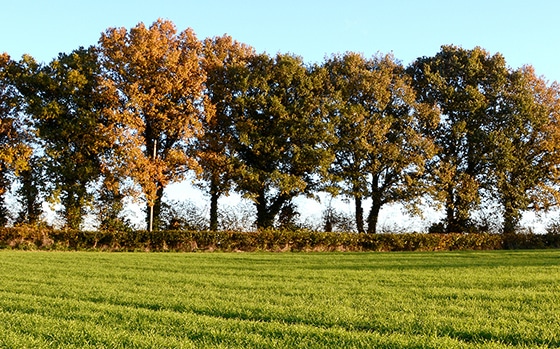-
InsightsInsight - Environmental - POSTED: September 4 2014
Renewables: where next?
From this autumn, farmers who use renewable energy will be able to compete for a share of over £200 million in subsidies under the new electricity market reform (EMR) programme. The NFU believes that farming will deliver one quarter of Britain’s green energy this decade, and with one in three businesses in the agricultural sector diversifying into renewables, it is clear that UK farmers are contributing significantly to the UK’s energy needs by incorporating bioenergy, windpower and solar PV technologies into their farming.
- Share this article
- Print this article
-
-
From this autumn, farmers who use renewable energy will be able to compete for a share of over £200 million in subsidies under the new electricity market reform (EMR) programme. The NFU believes that farming will deliver one quarter of Britain’s green energy this decade, and with one in three businesses in the agricultural sector diversifying into renewables, it is clear that UK farmers are contributing significantly to the UK’s energy needs by incorporating bioenergy, windpower and solar PV technologies into their farming.
The subsidies currently available include:
- Feed in Tariffs – these are available for small scale energy generation (up to 5 MW) and include Solar PV, wind, hydro, anaerobic digestion and micro combined heat and power technologies. The scheme is funded through electricity bills.
- Renewable Obligations – these are for larger scale projects over 5MW. The Renewable Obligation is administered by Ofgem who issues Renewable Obligation Certificates to operators for eligible renewable energy generated.
- Renewable Heat Incentive – again for small scale renewable schemes, designed to increase the uptake of biomass, solar thermal , heat pumps and biogas.
Things are set to change soon with the introduction of Contracts for Difference in 2015 which will gradually replace the Renewables Obligations up to 2017 when Renewable Obligations will be phased out. These changes are aimed at large scale low carbon generation and will not affect small scale installations supported by Feed-in-Tariffs.
Renewable Obligations for large scale solar PV projects over 5 MW capacity will be halted from April 2015 under plans announced by the Department of Energy and Climate Change (DECC) in April this year. However, they will still be eligible for support through the new Contracts for Difference scheme. The changes for Solar PV will no doubt mean less large scale solar farms in the countryside. However, the Government has announced plans to split the banding for projects larger than 50kW under the Feed-in-Tariffs scheme as a way to boost deployment of mid-scale rooftop projects which of course may still be an attractive option for farm buildings.
In addition to the subsidies that may be available for renewable energy, there are also a number of financial schemes available to assist with the funding, in particular bioenergy facilities. These include the On-Farm AD Fund which has been developed to help farmers in England to obtain financial support to build small-scale AD plants on their farms. The Green Investment Bank has also been set up and has £3 billion to invest in sustainable projects. Energy from waste (including anaerobic digestion) is a specific priority for the Bank.
This content is correct at time of publication
Can we help?
Take a look at our Environmental page for useful information, resources, guidance, details of our team and how we may be able to help you
-
Get in touch
Please fill out the below form or alternatively you can call us on 01622 690691
